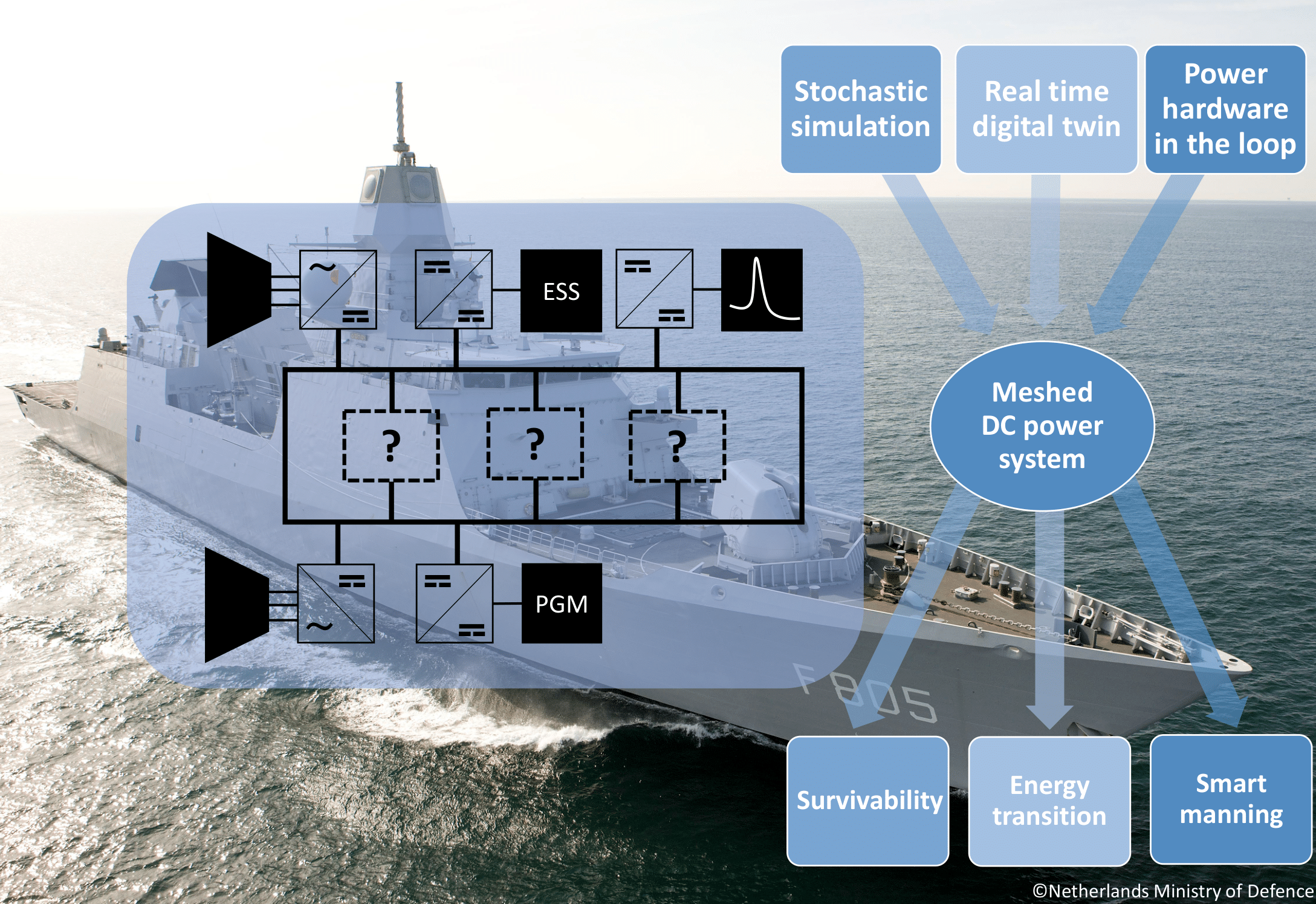Survivable MVDC shipboard power systems design and protection

Project description
The maritime sector is responsible for 3% of global greenhouse gas emissions (GHG) and a significant proportion of the SOx, NOx, and PM emissions. Studies performed by the IMO have shown that the GHG emissions of shipping are forecast to increase between 50% and 250% by the year 2050. So, without action, the maritime sector would become responsible for 10-13% of global emissions within the next few decades. With the goal set to reach climate neutrality, a big challenge is put on the maritime sector to improve the vessel's efficiency and transition from fossil fuels to renewable energy alternatives. Another big challenge the maritime industry faces is the shortage of seafarer staff. The current tight labour market makes qualified maritime staff harder to supply. This, in the long run, puts the operational ability of ships into jeopardy. Smart manning is seen as the solution to reduce staff requirements directly and maintain safe ship operation.
To implement both the energy transition and smart manning, the electrification of a ship's power system is proposed. Future all-electric ships (AES) allow for the integration of renewable energy sources and can automate a large part of the power system control and protection. These AESs require an intelligent shipboard power system (SPS) architecture which connects loads, like the propulsion system, to the power generation modules. For shipboard applications, the DC power system has been shown to possess significant advantages over AC, like increased efficiency, improved power flow control, reduced SPS weight and size, no synchronisation problems, and more. However, these advantages come with a set of compromises. As the DC power system technology is not yet matured, DC components for high power and high voltage applications are associated with significant losses. Besides, protection of a MVDC power system is complicated as state-of-the-art DC circuit breakers are lossy and unable to reach the large current breaking requirements.
In industry, a DC-AES should meet a minimal level of reliability. As most vessels operate without access to proper maintenance for an extended period, its ability to handle component failures is of great significance. In addition, a ship should be able to sustain system failures caused by unanticipated environments. This requirement is getting even more severe for Navy applications, where the vessel should be fault tolerant against multiple hostile attacks. The impact of missiles, fires and compartment folds on the SPS should be actively minimised. Therefore, a minimal level of power systems survivability must be attained before a DC-SPS is implemented in industry.
This thesis project addresses the reliability and survivability aspects of DC-SPS from the perspective of the power system structure. The project is focused on analysing the ability of dc system technology to improve both the reliability and survivability of the vessel's power system. This is performed by designing a meshed dc-SPS architecture and associated protection strategy that maximises the combined reliability and survivability of the ship.
Objectives:
- Investigate the impact of the SPS architecture on the reliability of different vessel structures.
- Study the effect of power system reconfigurability on the survivability of the ship.
- Examine how power electronic converters can best be employed to limit the impact of faults in meshed DC-SPS.
- Investigate how a smart fault management strategy can be optimally used to improve DC-SPS survivability.
Team:
PhD Candidate: Ir. Robin van der Sande - R.P.J.vanderSande@tudelft.nl
Supervisor: Dr. ir. Aditya Shekhar - A.Shekhar@tudelft.nl
Promotor: Prof. dr. ir. Pavol Bauer - P.Bauer@tudelft.nl
Project partners:
NLDA, DMO, MARIN, RH Marine, Damen Naval, Royal IHC, Royal Van Lent, Nedstack, Huisman Equipment, Heinen & Hopman, Fugro